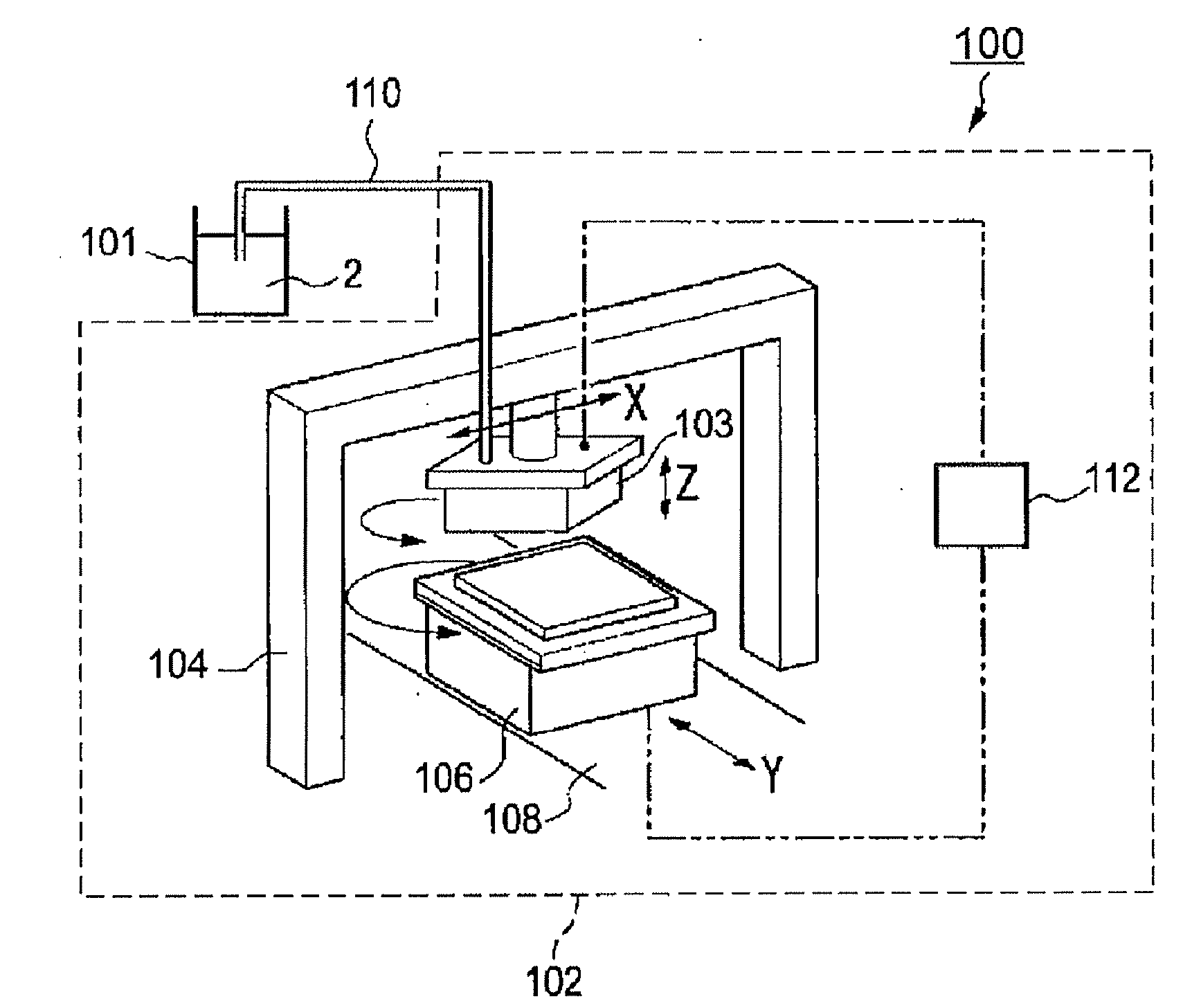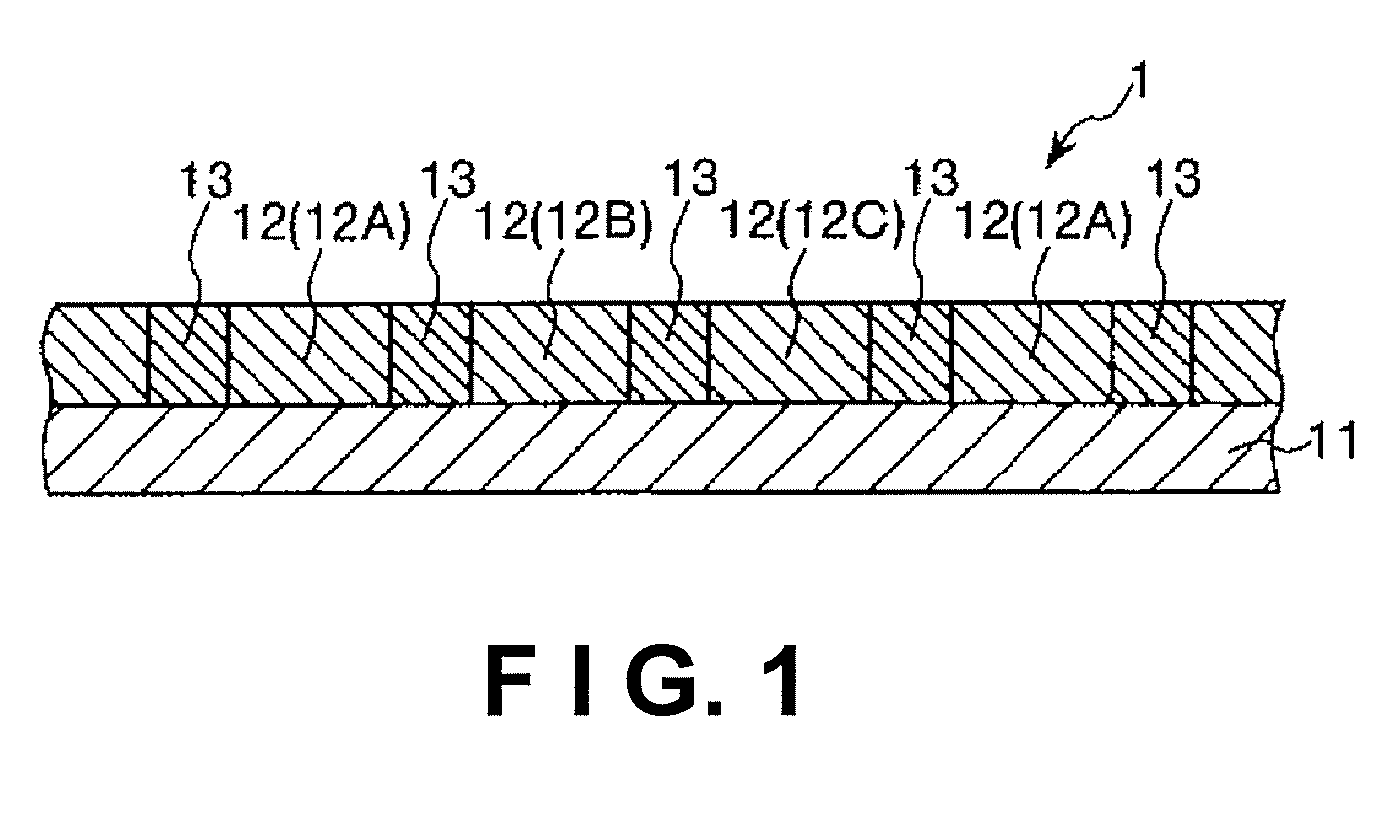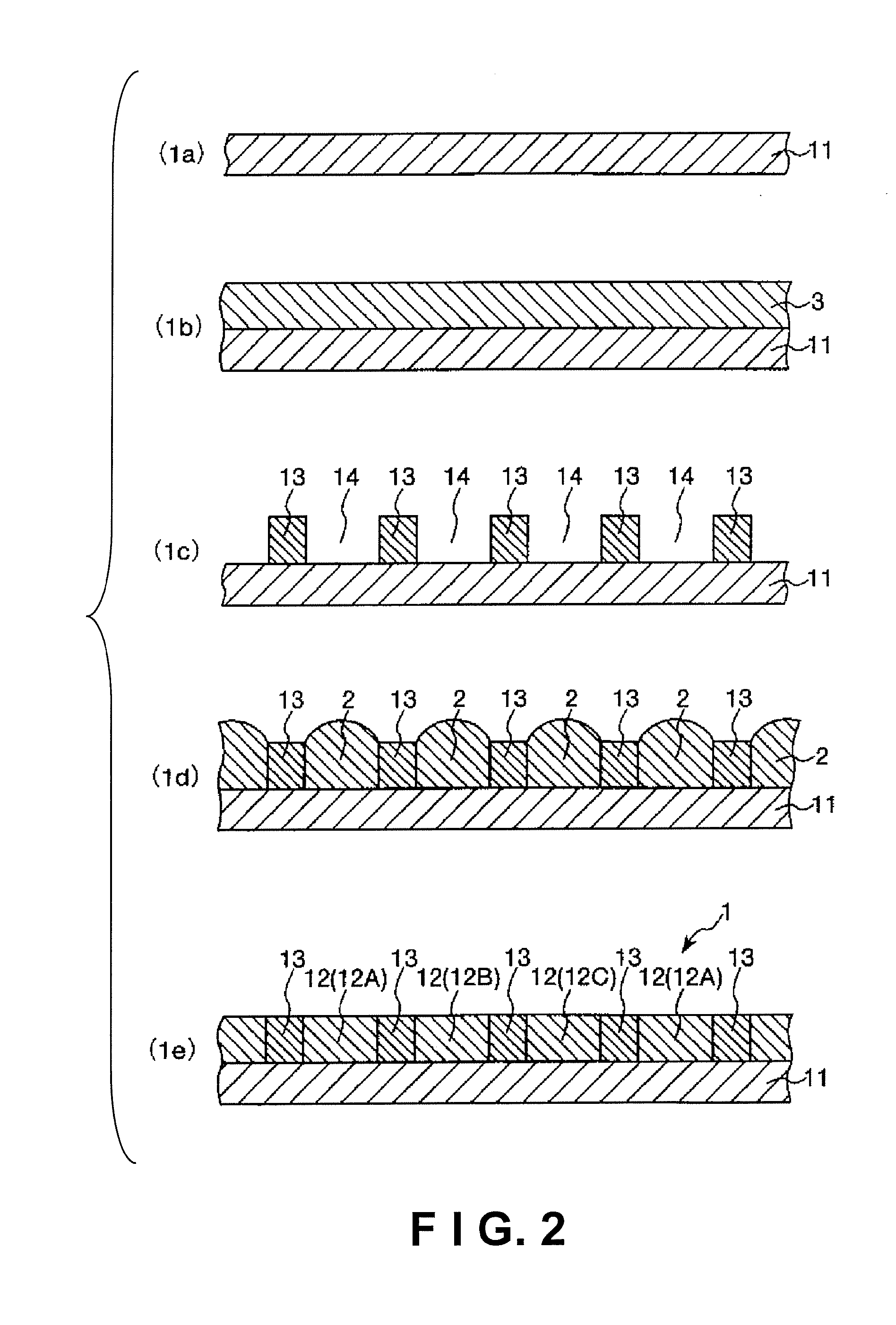Color filter ink, color filter ink set, color filter, image display device, and electronic device
a color filter and ink technology, applied in the field of color filter inks, can solve the problems of poor dispersion of a halogenated phthalocyanine zinc complex in an ink, increase in the manufacturing cost of the color filter, and undesirable processes, and achieve excellent long-term dispersion stability of pigments, excellent lightness and contrast, and excellent discharge stability
- Summary
- Abstract
- Description
- Claims
- Application Information
AI Technical Summary
Benefits of technology
Problems solved by technology
Method used
Image
Examples
example 1
[0232]12.96 g (36 parts by weight) of the dispersing agent Disperbyk 162, 4.32 g (12 parts by weight) of the dispersing agent Disperbyk 111, 28.43 g (79 parts by weight) of the thermoplastic resin SPCN-17X (manufactured by Showa Highpolymer Co., limited), and 61.90 g (172 parts by weight) of the solvent 1,3-butylene glycol diacetate put into an agitating machine (single-axis mixer) having a capacity of 400 cc and agitated for 10 minutes with a dispermill as a preparatory dispersion treatment, thereby obtaining a dispersing-agent-dispersed liquid (preparatory dispersion step). The rotational speed of the agitation propeller of the agitating machine was 2000 rpm.
[0233]A fine dispersion step was then executed by adding pigments to the dispersing-agent-dispersed liquid obtained in the preparatory dispersion step and adding inorganic beads in multiple stages as a fine dispersion treatment.
[0234]First, 35.99 g (100 parts by weight) of a pigment were added to the dispersing-agent-dispersed...
examples 2 to 6
[0245]The color filter inks (ink set) were prepared in substantially the same manner as in Working Example 1 except that the types and amounts of materials used to prepare the color filter ink were changed and the treatment conditions used in the fine dispersion step (first treatment and second treatment) and the curable resin mixing step were modified as indicated in Tables 1, 2, 3, and 4.
PUM
| Property | Measurement | Unit |
|---|---|---|
| particle size | aaaaa | aaaaa |
| particle size | aaaaa | aaaaa |
| boiling point | aaaaa | aaaaa |
Abstract
Description
Claims
Application Information
 Login to View More
Login to View More - R&D
- Intellectual Property
- Life Sciences
- Materials
- Tech Scout
- Unparalleled Data Quality
- Higher Quality Content
- 60% Fewer Hallucinations
Browse by: Latest US Patents, China's latest patents, Technical Efficacy Thesaurus, Application Domain, Technology Topic, Popular Technical Reports.
© 2025 PatSnap. All rights reserved.Legal|Privacy policy|Modern Slavery Act Transparency Statement|Sitemap|About US| Contact US: help@patsnap.com



